Copywriting For Beginners
6 Proven Copywriting Techniques That Work
6 Proven Copywriting Techniques That Work

If you’re wondering why your landing pages aren’t making you as much money as you had hoped for, you might be using common landing page copywriting techniques the wrong way.
If that’s you, read on to find out how to increase your marketing conversion rate simply and effectively.
This is not just a ‘copywriting for beginners’ post, and you aren’t going to learn how to become a world class digital copywriter in the space of a few minutes!
While the six copywriting techniques we’re about to cover have been proven to work, too many marketers use them in a way that cancels out their otherwise potent conversion power.
This is a real shame because your landing page could be raking in larger profits if you only paid closer attention to how you implement these proven techniques.
The good news is that once you become aware of how badly you may be implementing these techniques, you can quickly fix them.
The key is to become aware that you’re using them the wrong way in the first place.
1: Tell A Story To Personalize Your Landing Page’s Value

Storytelling is one of the most powerful landing page copywriting techniques you can use. Not only do you pull your reader into the scenario your offer addresses, but you also create emotional urgency with your offer.
Once emotionally engaged, chances are much higher that your viewer would enter his or her email address or make a purchase.
Awesome, right?
Well, sadly, too many marketers tell stories that are simply worthless.
They are duds.
They seem too good to be true. They show extreme conditions. They simply fail to convert.
What went wrong?
Instead, these low converting landing pages tend to present almost ‘too good to be true’ situations.
If you want your landing page stories to convert, take the most probable circumstances faced by your target audience members and base your stories on these.
These realistic stories are more believable because more of your audience members can relate to them.
2: Use A Question As A Header Title For Your Landing Page

Questions are very powerful ‘centering’ devices because they draw your prospects attention to one central concept or a small set of concepts. Questions help narrow and define the problems and situations your offer addresses.
If a question is well-defined, it is easier to present your solution and it is easier for the prospect to see the value in your solution.
To fix this problem, figure out the primary concern of your target audience members and pose relevant header questions.
3: Change Your Font To Emphasize Key Points Of Your Pitch

When you’re talking to somebody, you normally change your tone of voice when you are trying to emphasize certain things. By the same token, text in bold or italics or larger, ‘special’ fonts tend to be noticed more.
To maximize the impact of special fonts when emphasizing key points in your landing page text, make sure you use them SPARINGLY.
Keep special fonts to a minimum so when you do emphasize certain words, they truly STAND OUT.
4: Use Testimonials From Happy Customers

One of the most powerful selling tools you can use is social proof. People are more likely to buy whatever you are offering if they see that other people have had positive experiences with what you’re selling.
Pretty simple, right?
In fact, this is so simple that you’d think this would be hard to screw up.
Wrong. Marketers actually blow this all the time.
The key problem is RESTRAINT.
Make sure you only use REAL testimonials on your landing page.
Real testimonials are grounded in reality. This means there’s a mix of both positive and not-so-positive elements in the testimonials.
Above all else, use testimonials from happy customers who got results that are not outliers.
Otherwise, your testimonials might seem too good to be true and won’t carry much weight with people you’re trying to convince.
5: List Out The Benefits Of What You’re Promoting

One of the most common, yet powerful, copywriting tips you’ll ever come across is to write out benefits of your product, not features.
People buy based on benefits, not features. Benefits solve their problems. Benefits are easier to understand. Features, on the other hand, tend to degenerate into so much sales talk and technical jargon.
Sadly, too many marketers list SO MANY BENEFITS, they flood their prospects with information. This data overflow leads to, you guessed it, lower conversions.
Of course, you need to cross reference this information with the landing pages of your competitors to make sure you’re operating in the right ballpark.
6: Link Your Call To Action With The End Result Your Target Customers Want

One of the most useful copywriting conversion tricks you could ever learn involves pairing a call to action to a specific benefit the reader wants.
For example, instead of relying on the tired and weak “Click Here” try using “To finally get rid of the high costs and headaches of random outsourcing, enter your email here to take your labor sourcing results to the next level!” See the difference?
Well, marketers tend to blow this technique when they end up listing a ton of benefits with the call to action. Not only does this result in horrible run on sentences, this dilutes the conversion power of your call to action.
The reader is simply too confused to take any action at this point.
The solution?
Focus on one central benefit and pair that with the conversion action.
This is quite risky because your target audience might be looking for a number of benefits instead of just one.
This is where split testing comes in. Test different landing pages with different action-tied benefits and see which pages produce the best results with your traffic.
Don’t Be A Victim Of ‘Proven’ Landing Copywriting Techniques
Make no mistake about it, the landing page copywriting techniques we’ve just covered can turn your landing pages into quick winners.
If you want to know more about avoiding these and other copywriting mistakes, take a look at the featured resource below where you can download a copy of a free report, Copywriting Blunders, so you will be further forewarned. Download, read it and take action 😊

Common Elements In Highly Converting Sales Copy Part 2

This post is a continuation of looking into the common elements present in highly converting sales copy (you can see the first post here). In it we looked at the headline, storyline, sub-headlines, testimonials, and statistics to increase confidence.
Now lets’s continue and firstly let’s look at using media such as video and images.
Using Images And Videos In Your Copy
Sticking to text alone in your sales copy will be a big turn off for most prospective customers. Big, long blocks of text look boring and overwhelming. People have short attention spans now, so you need to break that text up with images and videos.
You can use stock photo sites like iStockPhoto or DepositPhotos to break up the text. If you want to use free stock photo sites you can check out Pixabay, Pexels or Unsplash, but if you can afford to pay for your images ,they will be better and more unique.
For example, if you’re in a section where the sub-headline and storyline are discussion frustration for diet failures, you might want to use an image of a man or woman feeling frustrated in front of a plate of food or on a weight scale.
With video, keep it short if you’re using it to break up the text sales copy. You don’t want to have five 20-minute videos on the page. Just keep it under 3 minutes each. Sometimes, it might require more, such as if it’s a demo of a software.
Don’t have the videos auto-play. Some marketers do prefer this, but most consumers don’t. If they have their volume up and they’re at work or somewhere quiet, and suddenly your sales page starts blaring, they’ll leave quickly.
When you host your video, make sure you eliminate as many click out options as possible. For example, if you host on Vimeo, it automatically defaults to make the Vimeo logo clickable, your name, the title of the video, and more clickable – all taking your customer away from the sales copy.
Strategic Bullet points To Help Clear Up Confusion
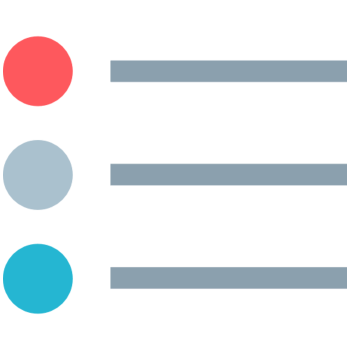
Bullet points are a blessing to most consumers who are short on time and who want to just get a quick rundown of what your product can do for them. The benefits are what many marketers focus on with their bullet points.
But you can also include pain points as bullet points. For example, you might have a sentence that says, “Wouldn’t you love to…” and then have bullet points addressing their pain points – stop having to shop in plus sized stores, avoid the shame and embarrassment of swimsuit season, etc.
Another way to strategically use bullet points is to have a rundown of what all is included in your product. You can say, “In this bundle, you’ll get…” and then go into detail about what all is included, such as – a 38-page PDF guide, 10 checklists, 5 videos you can refer to whenever you need them, and so on.
A Guarantee Can Close The Deal

A guarantee can be both an image and text explanation. You can get stock photos that say “Money Back Guarantee 100%” or instead of 100%, they may say 7 days, 30 days, 90 days and so on.
You can use bold text and a note that simply explains your guarantee (or lack thereof if you decide not to offer one). The main thing you need to do is remember which guarantee you chose and abide by it.
Don’t offer a 60-day no questions asked guarantee if you’re going to harass your customer about why they want a refund and then refuse to give it to them. When you do this, word gets around and it could even put your accounts on various platforms at risk.
Create A Call To Action To Guide Them To The Finish Line
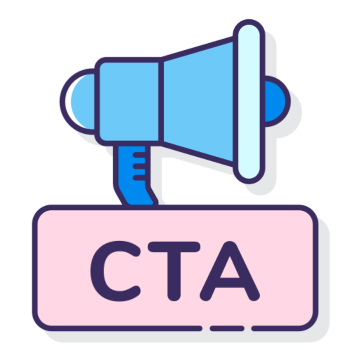
Authentic urgency is lacking in the online marketing industry. Too many unethical sellers use false urgency to try to get a sale. Instead, create real urgency and scarcity because in future launches, people will know not to wait.
Never expect people to automatically know to click the buy button, download now, and get started. You have to state it and guide the customer through every step along the way.
Working With Buy Button Options
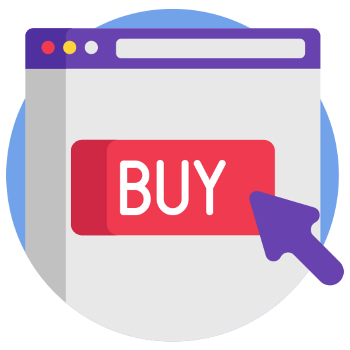
With buy buttons, you have the option to use a button that a platform provides for you – like PayPal, Warrior Plus or JVZoo. But you can also download and use a button of your choosing.
For example, on JVZoo, there’s a button option that says 100% satisfaction guaranteed, so it would need to match what you want to stand behind.
If you want to have a bit more freedom, you can use a payment processor such as Thrivecart and this is probably more advantageous in the long run.
As far as placement, some people only put one buy button at the very bottom of the page, while others place them throughout the sales copy. You may want to have it at the bottom with a countdown timer right above it, showing when the launch pricing or sale ends.
The Importance Of A Simple Post Script And Signature Area

Somewhere at the bottom, make sure you have a digital signature along with your image. People like to know who they’re buying from. You can either upload your real signature or create one from a variety of fonts online.
A good way to craft them is to use the first P.S. to restate the main benefits and what’s included. Use the second P.S. to reiterate the sense of urgency and what happens if they miss out on this great deal.
OK, so there you have the most common elements in highly converting sales copy. Add these to your sales pages and you should see immediate results!
And remember, if you want to have great results writing highly converting copy, you need to understand that this is difficult for many people as there are so many mistakes that can have a dramatic effect on conversions.
To help you avoid these mistakes, take a look at the featured resource below where you can download a copy of a free report, Copywriting Blunders, so you will be forewarned. Download, read it and take action 😊

Common Elements In Highly Converting Sales Copy Part 1

When you’re new to writing sales copy, it can feel a bit daunting trying to remember what all needs to go on the page to convert a visitor into a buyer. But once you learn the fundamental elements that help inform and sway your audience, you’ll be able to utilize them repeatedly to grow your business.
The great thing is, you get to decide, based on what you’ve seen in the marketplace and what you feel comfortable with, what to put in your own copy. You can even split test the page to see what works best – one headline versus another or three testimonials versus zero, for example.
Creating Your Main Headlines
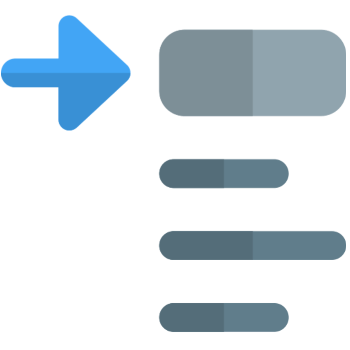
When you’re working with your primary (larger) headlines, you’ll often see certain strategies being implemented in niche marketing. For example, one common starter headline used to be “Who else wants to…?”
Another thing you can do is ask a question or discuss the biggest benefit or pain point that a person viewing your page might have. You can find books on Amazon and elsewhere that do nothing but teach you the strategy of writing persuasive headlines, and many will have built in swipes for you to use when tailoring them to your own niche.
You can also find free swipe files online that you can tweak.
What Will Your Storyline Contain?

After your major headline(s), you’ll typically have your main storyline. This is where you introduce the slant and tone of your sales letter. You might be all hype talking about money or pounds lost.
You might have the demeanor of a drill sergeant or that of a coddling, kumbaya leader. This is where the prospective customer will gain some insight about what kind of product (and person) they’re about to encounter.
With storyline, you’re making that connection that builds trust between you and the consumer. You’re letting them know you understand their problem and that you have enough empathy to help them through it.
Drilling Down Into Specifics with Sub-headlines

While your main headline will discuss the biggest issue, like earning money or losing weight, your sub-headlines can dig down into some of the other aspects of their pain points.
Think about the benefits, for example. Earning more money does many things – gives them peace of mind, helps them live the life they want with vacations, cars, homes, etc. It allows them to be their own boss.
When you have sub-headlines talking about different things, the consumer can scroll past items they don’t care about and find the ones they do. It may also give them insight into things they hadn’t considered yet.
Make sure that in your sub-headlines, you’re giving everything away. You want it to plant a seed or an idea in their minds of what they’ll gain by buying your product. Some marketers go too far and say too much in their copy.
Using Testimonials in Your Sales Copy
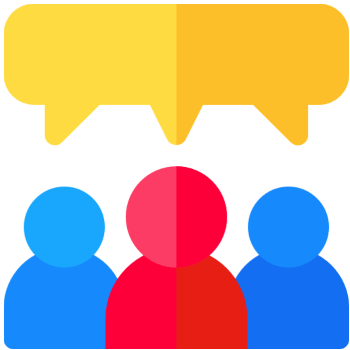
Testimonials are not necessary to your sales copy, but real ones probably do help to convince buyers that you and your products are legitimate and worthy of consideration. If you don’t have any natural testimonials, you can solicit them.
If possible, ask them to provide a video testimonial, because those are always more effective. Don’t use phony stock photos and make up testimonials. This almost always gets found out and then you ruin your reputation because customers won’t trust you anymore.
Gather Your Statistics To Boost Confidence In Your Product
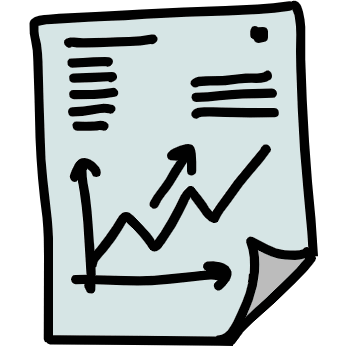
Statistics and numbers can be very convincing when it comes to strengthening your sales copy. It verifies your information and advice from outside sources and supports your recommendations.
For example, you might find a statistic that says 8 out of 10 people succeed with one diet while only 4 out of 10 succeed long-term with another. That’s a fact that would give the consumer more certainty that they’re choosing the right one.
Failure statistics are also effective. If you can say that 70% of people fail when they do something, it’s a warning to readers that they need to avoid that and do something else (whatever it is you’re recommending).
One statistic you can look up is the number of sufferers or people in the same boat as someone else. For example, over 300 million people worldwide have diabetes. Talk about if the problem is growing or if it’s getting under control.
We’ll continue this in part 2, but in the meantime if you want to have great results writing highly converting copy , you need to understand that this is difficult for many people as there are so many mistakes that can have a dramatic effect on conversions.
To help you avoid these mistakes, take a look at the featured resource below where you can download a copy of a free report, Copywriting Blunders, so you will be forewarned. Download, read it and take action 😊

6 Copywriting Techniques That Will Boost Your Conversions

If you’re wondering why your landing pages aren’t making you as much money as you had hoped for, you might be using common landing page copywriting techniques the wrong way.
While the six copywriting techniques we’re about to cover have been proven to work, too many marketers use them in a way that cancels out their otherwise potent conversion power.
This really is too bad because your landing page could be raking in larger profits if you only paid closer attention to how you implement these proven techniques.
The key is to become aware that you’re using them the wrong way in the first place.
1: Tell A Story To Personalize Your Landing Page’s Value

Storytelling is one of the most powerful landing page copywriting techniques you can use. Not only do you pull your reader into the scenario your offer addresses, you also create emotional urgency with your offer.
Awesome, right?
Well, sadly, too many marketers tell stories that are simply worthless.
They are duds.
They seem too good to be true. They show extreme conditions. They simply fail to convert.
What went wrong?
The stories most marketers tell in their landing pages fail to focus on putting a human face on the problem the reader is facing.
Instead, these low converting landing pages tend to present almost ‘too good to be true’ situations.
If you want your landing page stories to convert, take the most probable circumstances faced by your target audience members and base your stories on these.
These realistic stories are more believable because more of your audience members can relate to them.
2: Use A Question As A Header Title For Your Landing Page

Questions are very powerful ‘centering’ devices because they draw your prospects attention to one central concept or a small set of concepts. Questions help narrow and define the problems and situations your offer addresses.
If a question is well-defined, it is easier to present your solution and it is easier for the prospect to see the value in your solution.
To fix this problem, figure out the primary concern of your target audience members and pose relevant header questions.
3: Change Up Your Font To Emphasize Key Points Of Your Pitch

When you’re talking to somebody, you normally change your tone of voice when you are trying to emphasize certain things. By the same token, text in bold or italics or larger, ‘special’ fonts tend to be noticed more.
To maximize the impact of special fonts when emphasizing key points in your landing page text, make sure you use them SPARINGLY.
Keep special fonts to a minimum so when you do emphasize certain words, they truly STAND OUT.
4: Use testimonials from happy customers

One of the most powerful selling tools you can use is social proof. People are more likely to buy whatever you are offering if they see that other people have had positive experiences with what you’re selling.
Pretty simple, right?
In fact, this is so simple that you’d think this would be hard to screw up.
Wrong. Marketers actually blow this all the time.
The key problem is RESTRAINT.
Make sure you only use REAL testimonials on your landing page.
Real testimonials are grounded in reality. This means there’s a mix of both positive and not-so-positive elements in the testimonials.
Above all else, use testimonials from happy customers who got results that are not outliers.
Otherwise, your testimonials might seem too good to be true and won’t carry much weight with people you’re trying to convince.
5: List Out The Benefits Of What You’re Promoting

One of the most common, yet powerful, copywriting tips you’ll ever come across is to write out benefits of your product, not features.
People buy based on benefits not features. Benefits solve their problems. Benefits are easier to understand. Features, on the other hand, tend to degenerate into so much sales talk and technical jargon.
Your landing page shouldn’t read like a laundry list or check list. Instead it should be focused on a very small set of benefits which were strategically selected to appeal to your target readers. To figure out which benefits to focus on, ask your target audience members.
Of course, you need to cross reference this information with the landing pages of your competitors to make sure you’re operating in the right ballpark.
6: Link Your Call To Action With The End Result Your Target Customers Want
.png)
One of the most useful copywriting conversion tricks you could ever learn involves pairing a call to action to a specific benefit the reader wants.
For example, instead of relying on the tired and weak “Click Here” try using “To finally get rid of the high costs and headaches of random outsourcing, enter your email here to take your labor sourcing results to the next level!” See the difference?
Well, marketers tend to blow this technique when they end up listing a ton of benefits with the call to action. Not only does this result in horrible run on sentences, this dilutes the conversion power of your call to action.
The reader is simply too confused to take any action at this point.
The solution?
Focus on one central benefit and pair that with the conversion action.
This is quite risky because your target audience might be looking for a number of benefits instead of just one.
This is where split testing comes in. Test different landing pages with different action-tied benefits and see which pages produce the best results with your traffic.
Don’t Be A Victim Of ‘Proven’ Landing Copywriting Techniques

Make no mistake about it, the landing page copywriting techniques we’ve just covered can turn your landing pages into quick winners.
However, you have to use them the right way. Avoid the common implementation pitfalls outlined and truly take your landing page conversion rates to the next level!

Copywriting For Beginners: How To Write Good Sales Copy

Learning to write good sales copy isn’t something you can learn by reading a quick tutorial – it takes practice. Although you probably won’t turn into a world-famous copywriter overnight, there are a few tips you can use to increase the response from your sales letters.
It needs to grab the attention of your visitor quickly. Your headline might have shock value, ask a compelling question, or be the beginning of an extremely interesting story. “Six months ago, I was living on the streets of L.A., homeless after my Adjustable Rate Mortgage soared so high I couldn’t make the mortgage payments, but now I’m living in a sky-rise apartment twenty stories up that I paid seven figures for…”
This makes the reader want to know more – how did this person go from being destitute to being wealthy? Good sales copy usually tells a story that the audience can connect with. Copy ideally shouldn’t tell a fictional story, though.
You certainly don’t want to run into any trouble with the FTC or an attorney general with something to prove. Good copy gives people a reason to keep reading. If you tell an interesting, compelling story that’s somehow related to the product and how it will affect them, it will naturally appeal to your visitor.
Every single paragraph should lead into the next paragraph, drawing the reader further and further into the pitch.
Consumers usually buy based on emotion, and then they justify their purchase with logic. They rarely buy based on logic alone.
They don’t buy a product because of the features – they buy because of the benefits it will provide to them, the WIIFM (What’s In It For Me) factor. If you’re selling a car, you can’t tell the buyer that it has Corinthian leather seats, ABS brakes, and a superior sound system.
You have to sell them on the fact that their neighbors and coworkers will be envious, girls will flock to them, and they’ll feel like the king of the world whenever they drive it. Then they’ll buy based on the fantasy you’ve just given them, and they’ll use logic to justify their purchase later.
Within each online sales letter, you’ll want to have a main headline, numerous sub-headlines sprinkled throughout, and aside form the written storyline, you’ll want to add sections of benefit-driven bullet points that break up the monotonous text.
So. the headline is incredibly important. But it isn’t the most important part of your sales copy!!
Any idea what that is?
This is the big idea – the main premise around which you’re going to build your sales letter.
I’m talking about the primary purpose and promise of your product. This is the desired outcome your prospects have been hoping for.
Without a big idea, your sales copy will be pretty much the same as anyone else’s which will make converting your prospects much harder.
But with a powerful big idea, you will be able to stand out and this gives your prospects hope that your product or service may be the one that actually delivers on its promises.
This can make all the difference in marketplaces that are saturated and sophisticated i.e. they have been exposed to the same type of offer for years.
If you are in a niche that has a high level of marketplace sophistication, it is imperative that you are able to stand out and having a big idea and a unique mechanism helps you to do just that.
And you should be incorporating the big idea and/or unique mechanism into your main headline(s) to grab attention and arouse curiosity, so take some time to develop these to draw your readers in.
Don’t forget the call to action at the end and a Post Script (PS) or two that sums up the order in case they’re bona fide skimmers who hate to read.
In all honesty, most people will not read the entire sales letter, but skim to the things that grab attention such as headlines, bullet points and the PS which is why it is important to really work on these to either increase the pain points or clearly explain the benefits.
Go to some of your favorite sales pitch sites and emulate their style and approach. Bookmark it for your “swipe file,” where you borrow ideas (not content) from the original author and use it on your own target audience.
The best sales copy is a complex mix of marketing and sales messages. The marketing is about the prospect; their desires, pains etc. and the selling is about the product; features etc. so the best sales letters focus heavily on marketing.
The reason for this is that a good marketing message can create a lot of desire for the product before you even mention it and this makes selling much easier.
And be reassured; writing good, persuasive copy is a skill that can definitely be developed by anybody. Like anything, it just takes time and effort to get good at it and hone your skills.
But if any skill is worth developing, especially online, it is being able to write persuasive sales copy, so I urge anyone reading this to seriously consider learning it as soon as they possibly can; it will pay dividends in the future, believe me.






